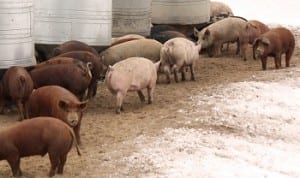Waste to energy plant creates power from hog manure
August 18, 2014The largest W2E biogas project is under construction.
In Northern Missouri, a huge $80 million waste to energy project is under development by Roeslein Alternative Energy (RAE) in collaboration with Murphy-Brown of Missouri (MBM), a Smithfield Foods livestock production subsidiary.
The team intends to capture and harvest biogas from 88 existing lagoons.
The companies claim that this is the biggest waste-to-energy project of its kind and they expect to harvest hundreds of millions of cubic feet of the renewable natural gas each year that will be distributed in the area. The lagoons are from MBM hog finishing farms that use a technology involving anaerobic digestion, which was installed and developed by RAE.
According to RAE President and CEO of Roeslein & Associates Rudi Roeslein, the hog waste to energy project will reveal the economic and environmental benefits that result from utilizing manure in a different method.
 With the help of impermeable synthetic covers that will be placed over the lagoons and barn scraper technology that will provide raw nutrients of livestock manure to them, the 88 lagoons will be transformed into anaerobic digesters. This, according to a recent press release, will lead to the decomposition of microorganisms that occur naturally in the manure in an environment that is free of oxygen. Biogas will rise to the surface of the lagoons where it will be collected and impurities removed.
With the help of impermeable synthetic covers that will be placed over the lagoons and barn scraper technology that will provide raw nutrients of livestock manure to them, the 88 lagoons will be transformed into anaerobic digesters. This, according to a recent press release, will lead to the decomposition of microorganisms that occur naturally in the manure in an environment that is free of oxygen. Biogas will rise to the surface of the lagoons where it will be collected and impurities removed.
What is leftover is over 98% methane that has a similar chemical composition as natural gas and can be utilized as fuel for vehicles or it can be used as part of the natural gas grid system. As for the solid residue that cannot be digested, local famers can use it as a natural fertilizer, while the water can help with irrigation.
On top of hog manure, other agricultural waste will be used in the waste to energy system.
RAE does not only intend to use hog manure to create renewable energy. They also intend to create biogas from cover crops that are harvested during growing season on chief agriculture land. The companies anticipate that the waste to energy project will begin to produce renewable natural gas by the end of the year.

 With over 15 years of reporting hydrogen news, we are your premier source for the latest updates and insights in hydrogen and renewable energy.
With over 15 years of reporting hydrogen news, we are your premier source for the latest updates and insights in hydrogen and renewable energy.